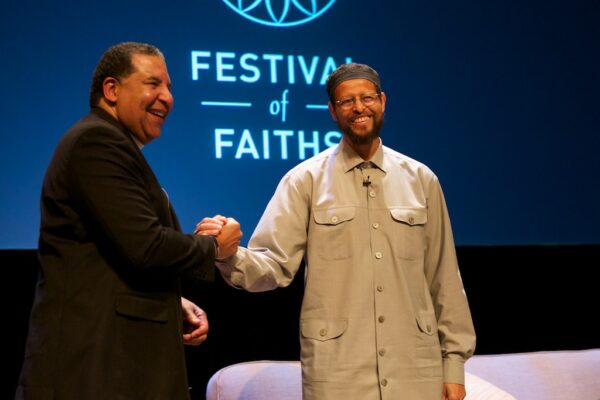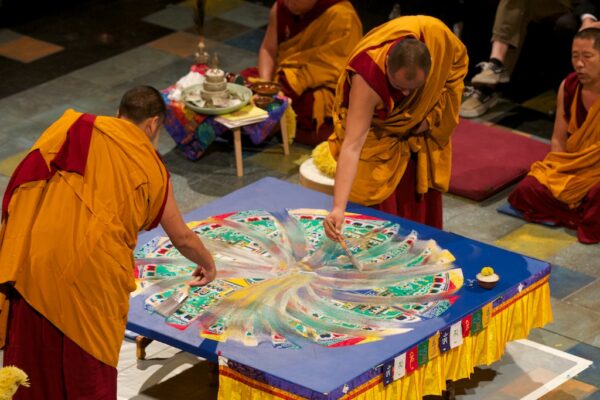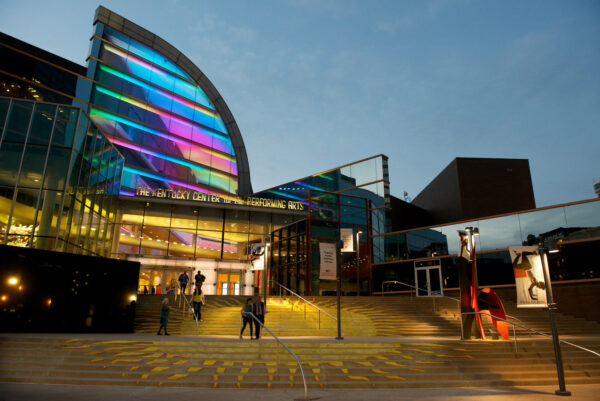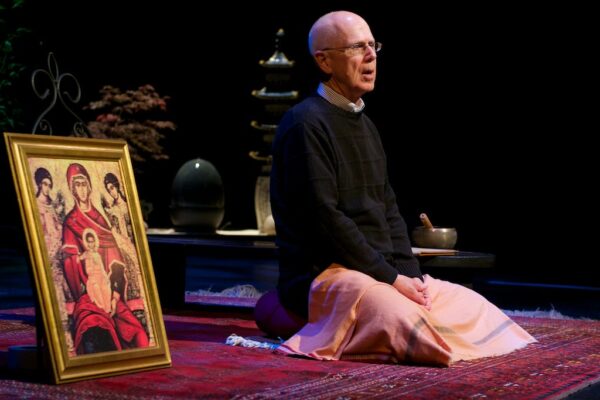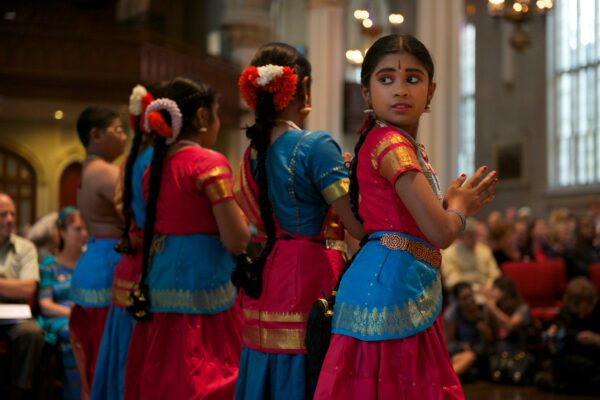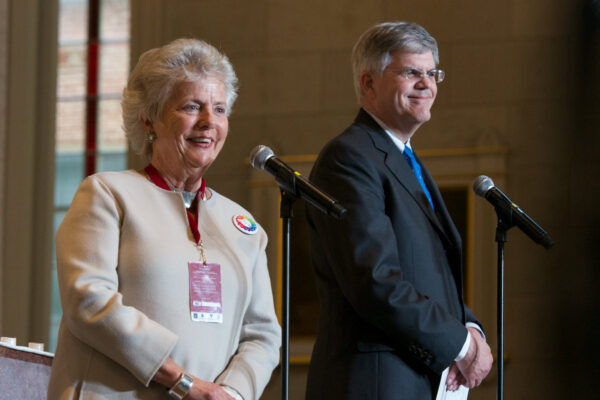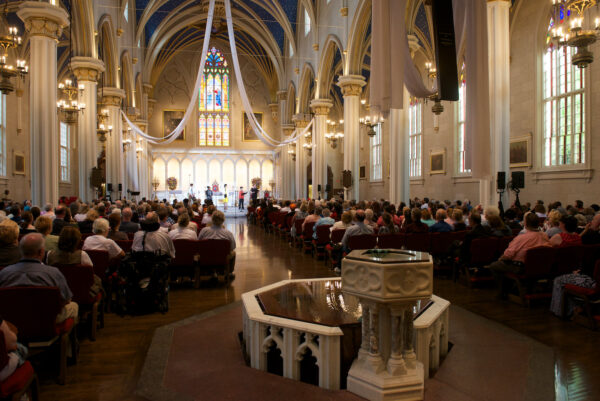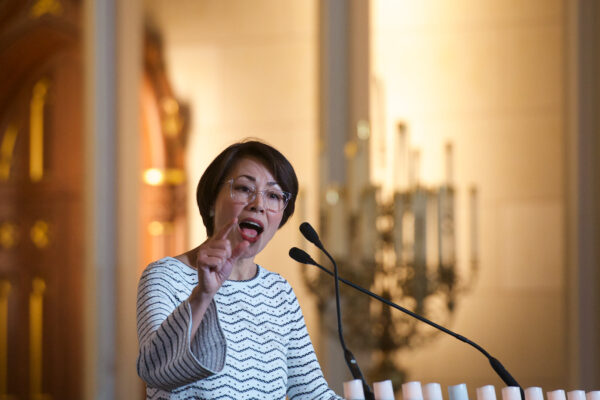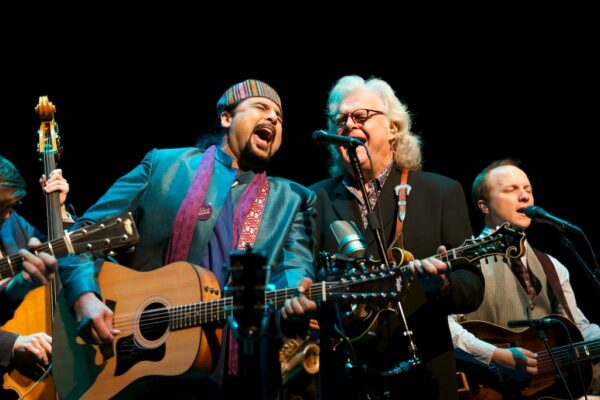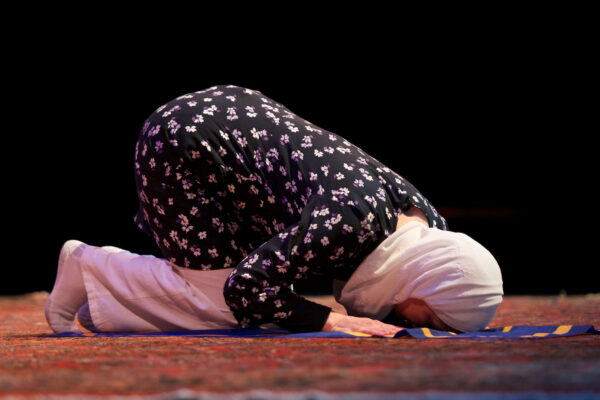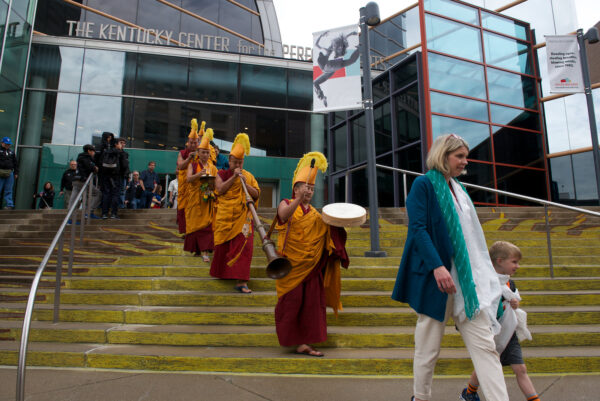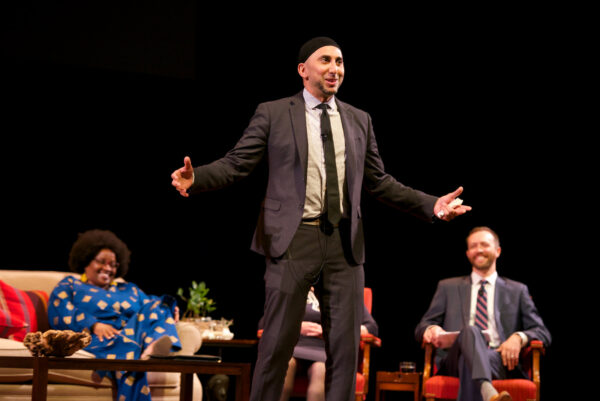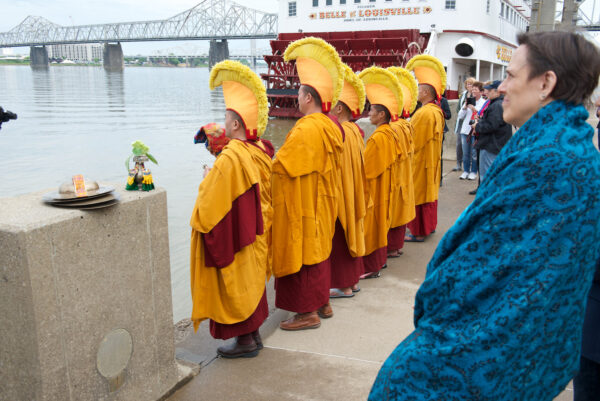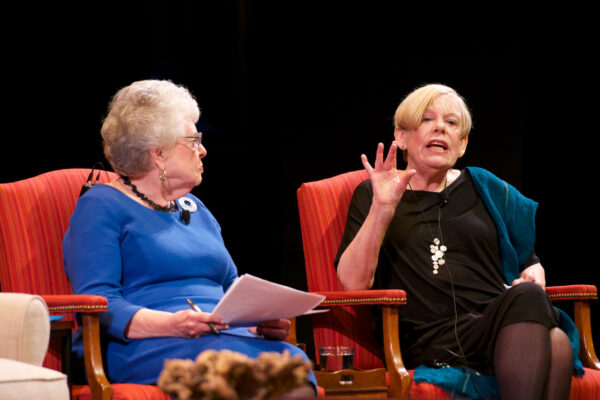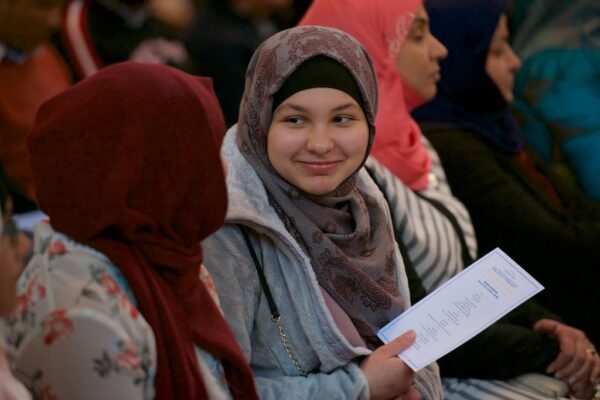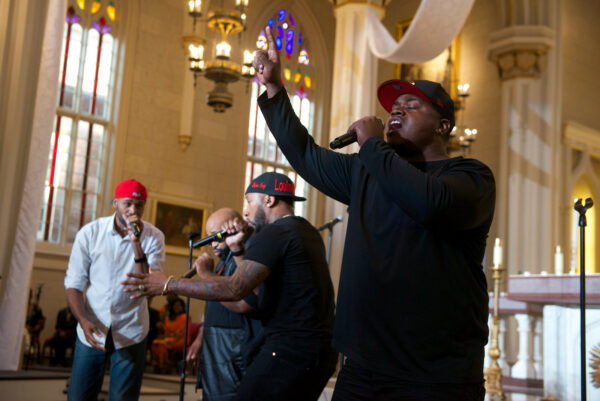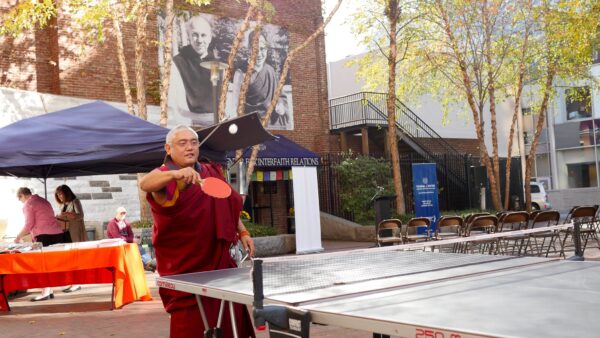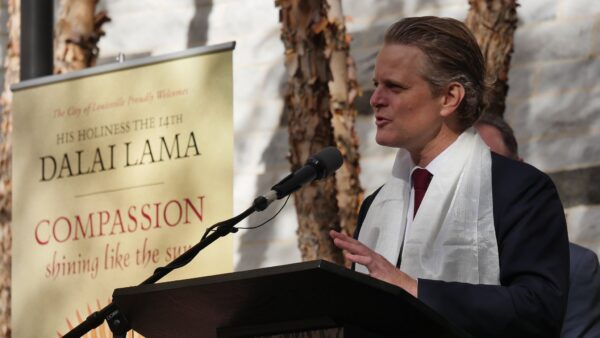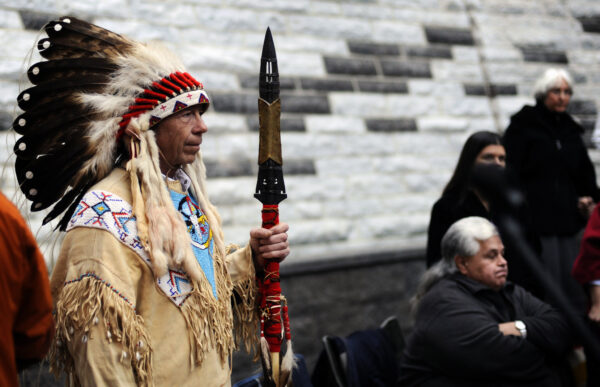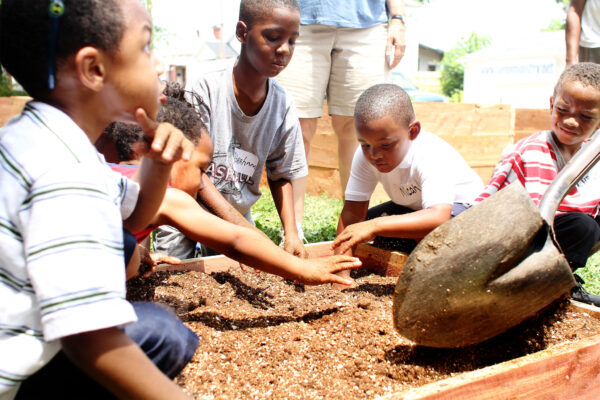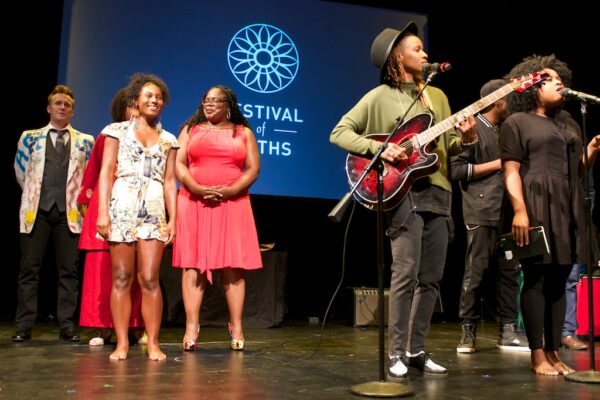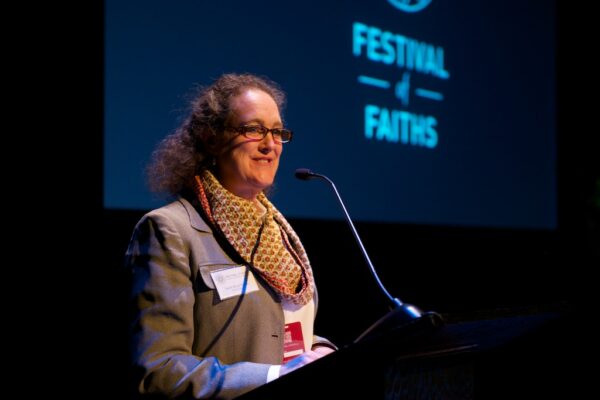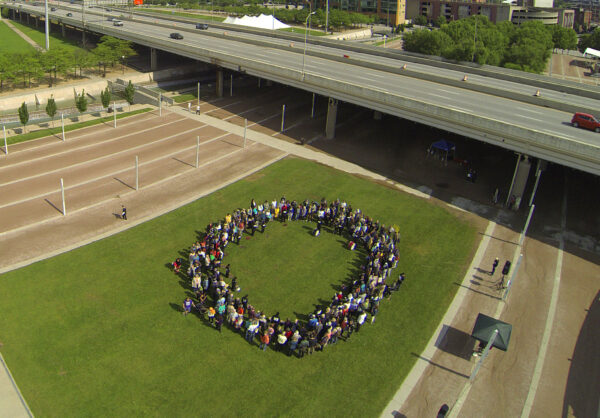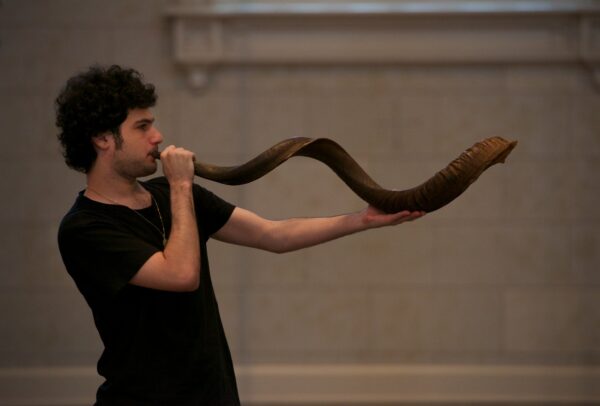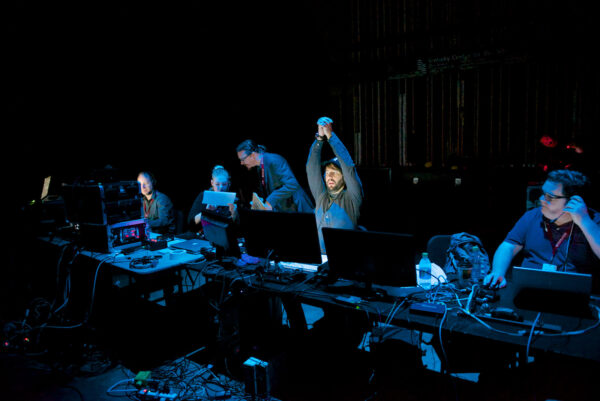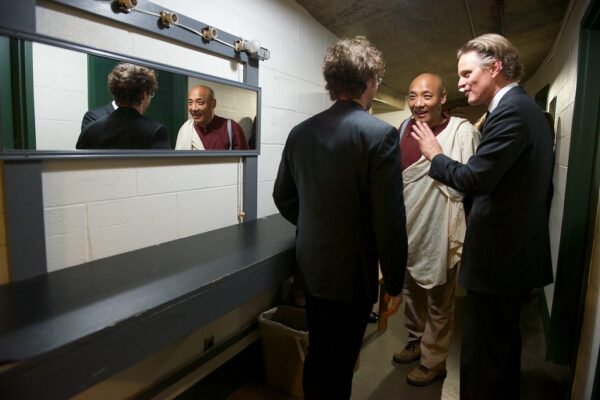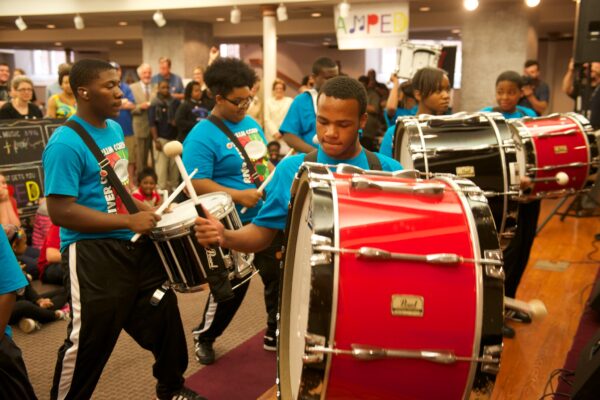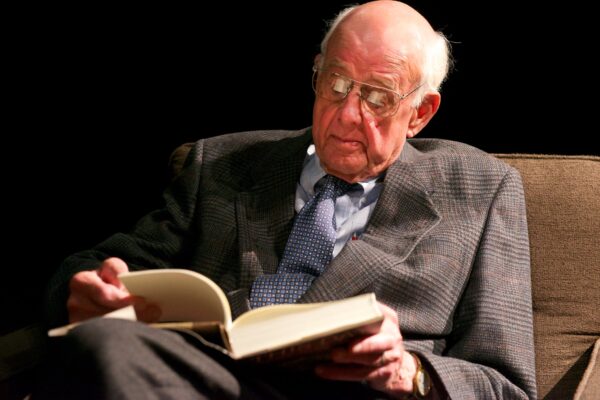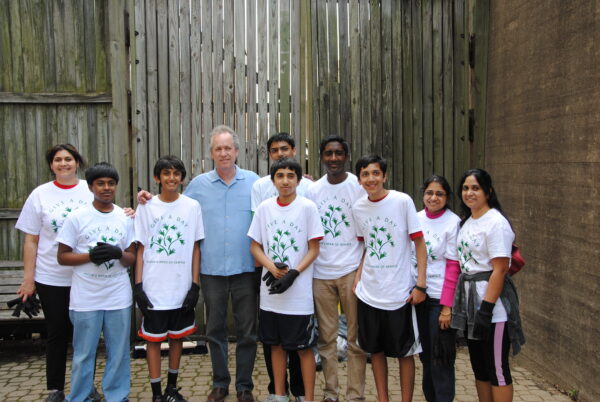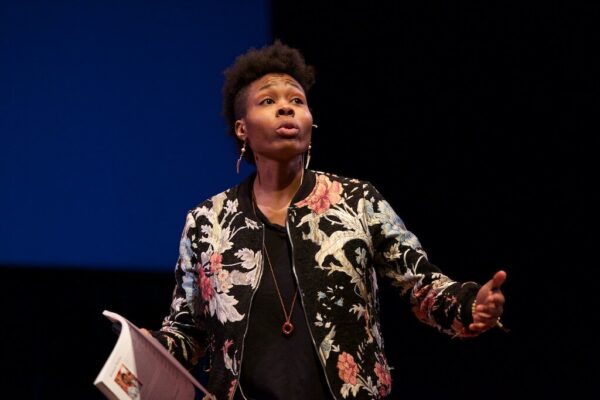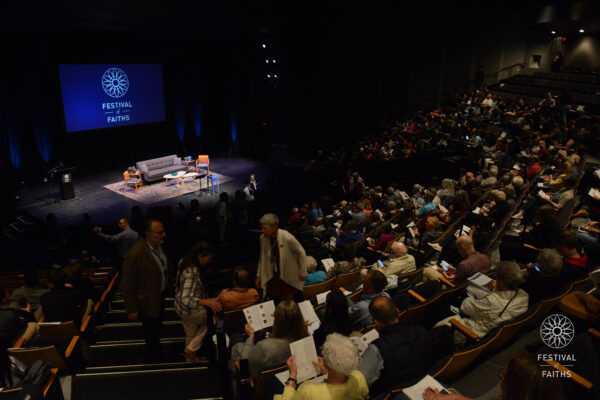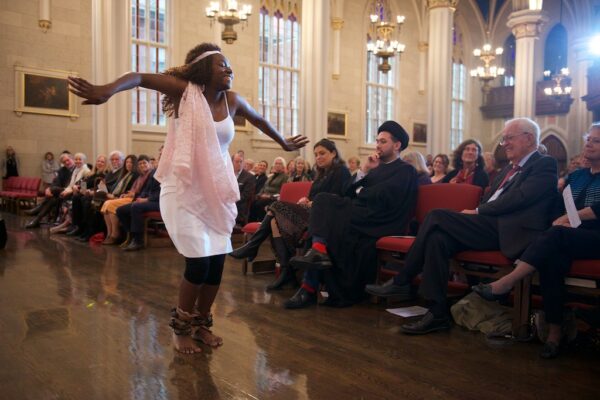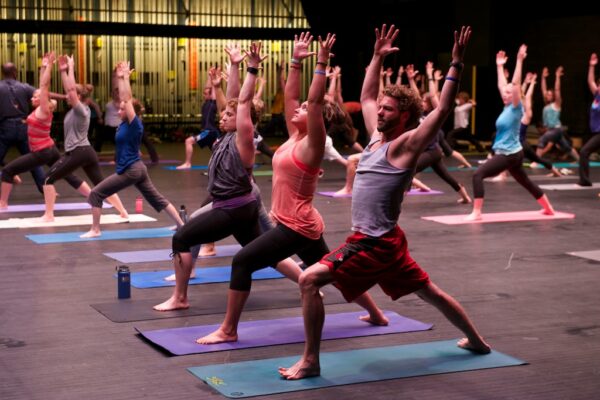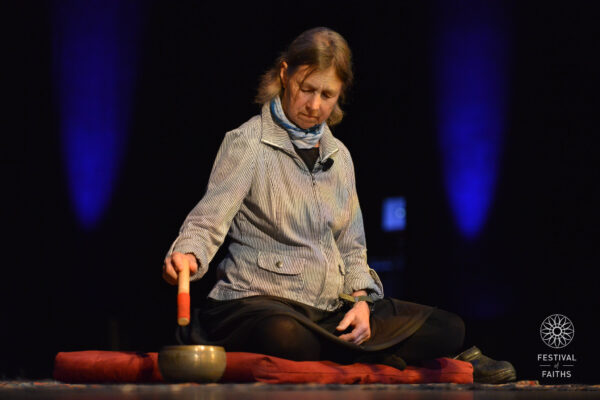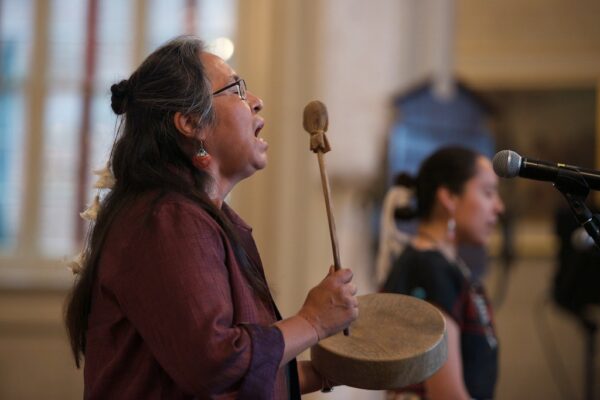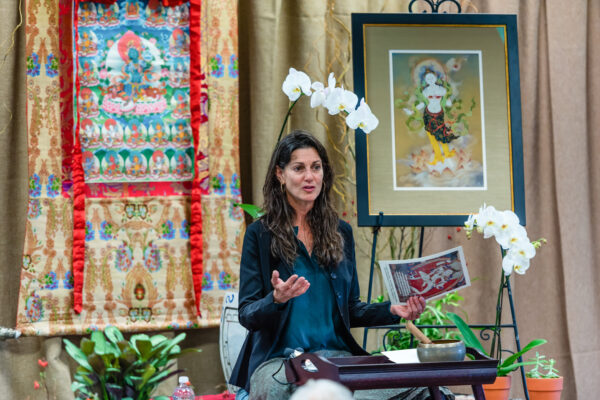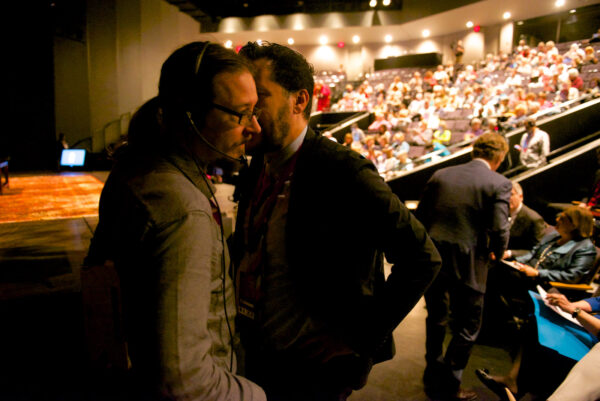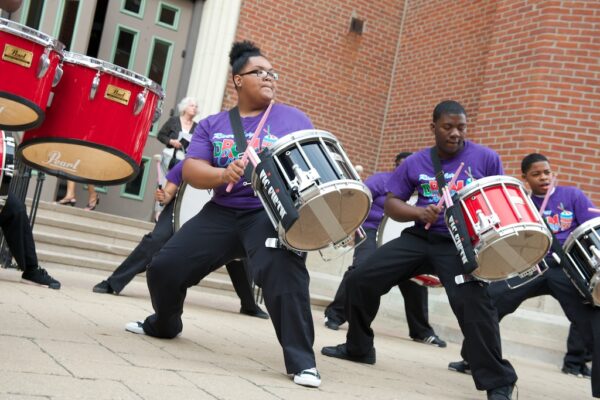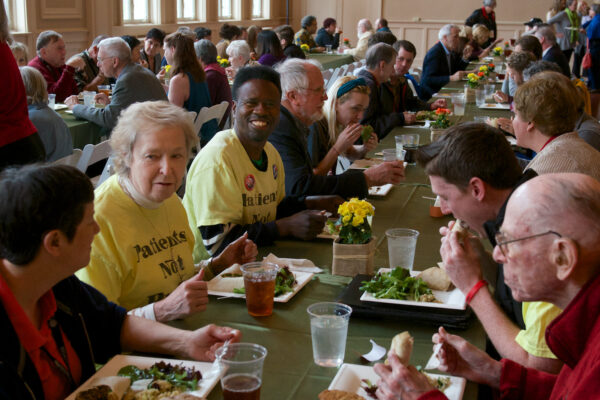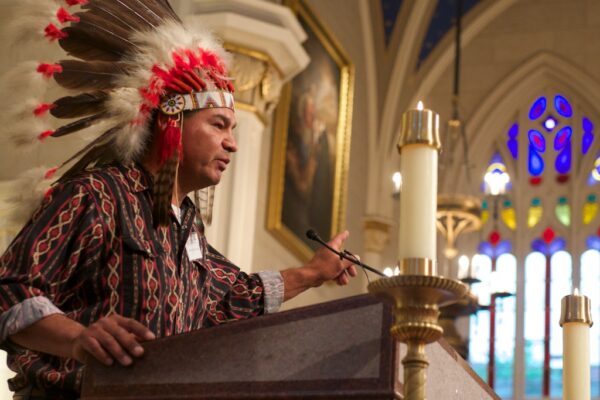25 Years of Festival of Faiths
In 2020, The Center for Interfaith Relations is celebrated its 25th annual Festival of Faiths. Join the celebration by learning more from our 25 year Festival retrospective.
Moments in Festival History
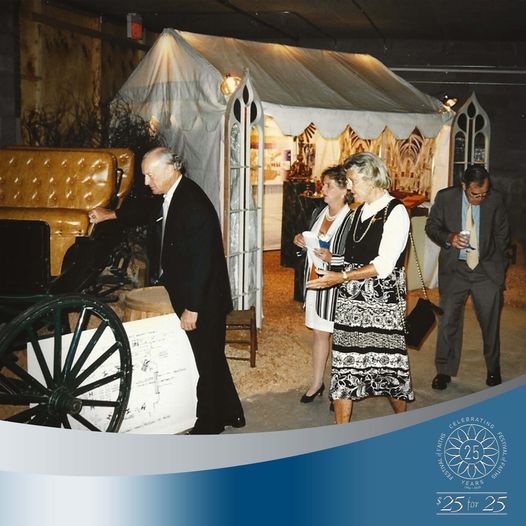
The inaugural Festival of Faiths in Louisville Gardens.
On November 16, 1996, the Festival of Faiths was born! It all began with the “Night of a Thousand Stars,” a gala honoring those who have made lasting contributions in the realm of interfaith work.This historic evening was the inaugural event of the Festival of Faiths — a celebratory gathering conceived by the Cathedral Heritage Foundation, which eventually would become the Center for Interfaith Relations.
“I don’t know of any place else where they’re doing this.” —The Rev. Kenneth Smith of the Chicago Theological Seminary said upon attending the first Festival of Faiths, which he hailed as a model for bringing people together.
On Nov. 17, 1996, a sea of white canopies spanned the floor of Louisville Gardens, which had been transformed to resemble a 19th-century tent revival. This first-ever Festival of Faiths sought to tell the unique story of Louisville’s spiritual heritage — a rich history that began as settlers crossed over the Appalachian Mountains and landed here, bringing with them diverse traditions. Dozens of local congregations and religiously affiliated institutions participated in this unprecedented event.
“Our differences make us unique. Our differences are what unite us as American. We are many threads woven into the fabric of this great country,” former Kentucky First Lady Judi Patton said during a peace walk that kicked off the 2001 Festival of Faiths. This sixth annual Festival convened two months after the Sept. 11 terrorist attacks, and our Pilgrimage for Peace symbolized reconciliation, hope and healing.
“Today, efforts like the Festival of Faiths have a different tenor… there is a focus on what faiths can achieve in common witness to the surrounding world,” renowned theologian Martin E. Marty said in advance of speaking at the 2005 Festival. His statement reflected the evolution of the Festival to encompass not only interfaith celebration, but also meaningful dialogue and common action. With this broadened purpose came a name change for the Cathedral Heritage Foundation, which founded the Festival — and in 2006, the Center for Interfaith Relations was born!
In 2015, HuffingtonPost named the Festival of Faiths one of “eight spiritual sites that welcome seekers of all faiths.” It’s a characterization that speaks to the heart of the Festival, which since its inception has sought to celebrate and shed light on the world’s vast spiritual traditions — from Buddhism to Baha’i, from Judaism to Christianity, from Hinduism to Islam, from Sikhism to Native American traditions, and many more.
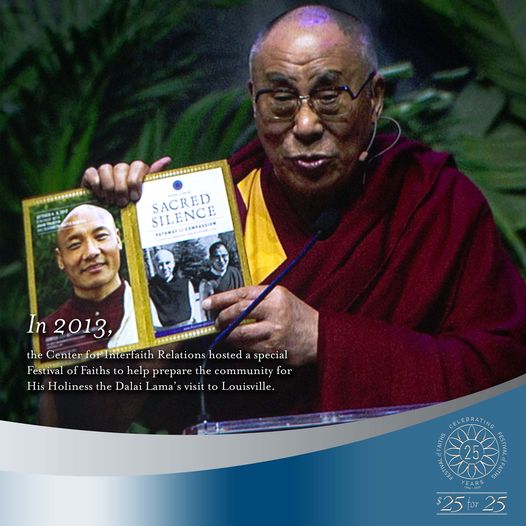 “Let’s deal with the idea of the compassionate city being a city that feels profound discomfort at the pain in the world. Let it disturb our dreams. Let us try and find a way to make people within our cities aware of the sacredness of every single human being,” Karen Armstrong, author of the Charter for Compassion, said during the 2017 Festival of Faiths. Her words illustrate how the Festival examines relevant, often difficult issues through the lens of faith—and with an eye toward compassion. In recent years, this commitment has played out on our stage during sessions such as Black Lives Matter, Face to Face With Islamophobia, The Climate Crisis, The Culture of Addiction and more.
“Let’s deal with the idea of the compassionate city being a city that feels profound discomfort at the pain in the world. Let it disturb our dreams. Let us try and find a way to make people within our cities aware of the sacredness of every single human being,” Karen Armstrong, author of the Charter for Compassion, said during the 2017 Festival of Faiths. Her words illustrate how the Festival examines relevant, often difficult issues through the lens of faith—and with an eye toward compassion. In recent years, this commitment has played out on our stage during sessions such as Black Lives Matter, Face to Face With Islamophobia, The Climate Crisis, The Culture of Addiction and more.
For the harvest of the spirit, thanks be to God.For the good we all inherit, thanks be to God.For the wonders that astound us, for the truths that will confound us, most of all that love has found us, thanks be to God.
A Look Back: In Pictures
Take a visual stroll down memory lane! These images represent just a fraction of the meaningful moments, sacred spaces and many people who have played a part in the history of the Festival. Check out our Festival of Faiths Flickr page to see more iconic photos.
2009 | 14th Annual Festival of Faiths | Sacred Water
The Festival of Faiths began a series embracing the primal elements with “Sacred Water: Sustaining Life” in 2009. Along with viewing the ways water factors into many faith traditions as a sacramental tool, we looked at our relationship with water in our daily lives.
Tori Murden McClure, president of Spalding University, recounted her journey as the first woman and first American to row solo across the Atlantic Ocean, and six of the Thirteen Indigenous Grandmothers discussed their documentary film “For the Next Seven Generations.” We also hosted an exhibition hall at the Henry Clay, where houses of worship shared their own relationships with water in sacred practices.
A recurring theme throughout the festival was our environmental impact on waterways. The festival also served as an opportunity for the nonprofit WaterStep (formerly EDGE Outreach) to showcase the lifesaving water treatment and pump repair programs they administer throughout the world. Since its debut at the 2009 Festival of Faiths, WaterStep has grown into an internationally renowned organization that provides safe water to communities in developing countries across the globe.
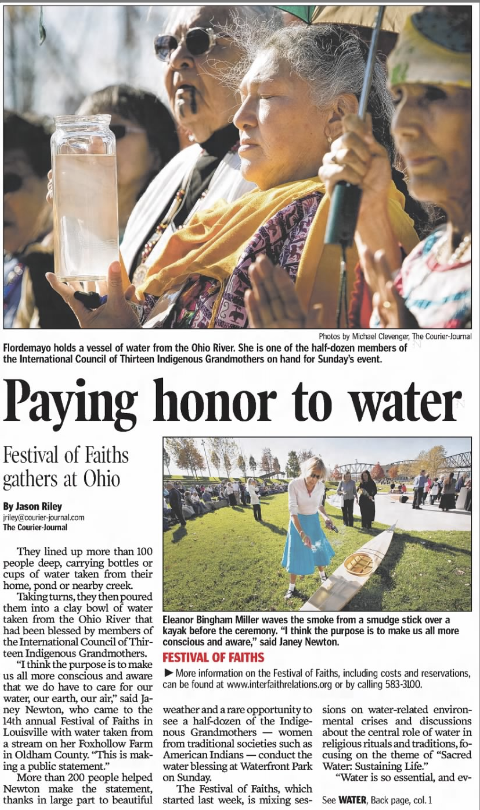
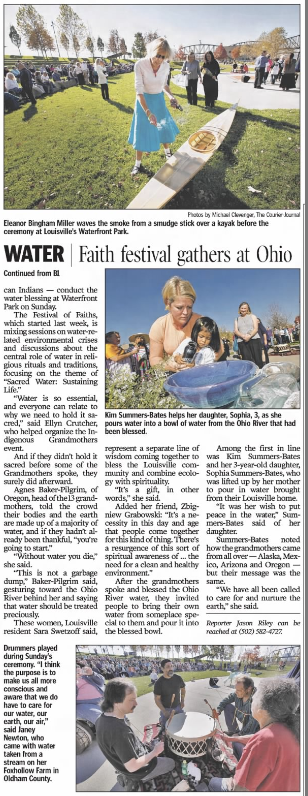
Riley, Jason. “Paying Honor to Water.” The Courier-Journal, 9 Nov. 2009, p. B1.
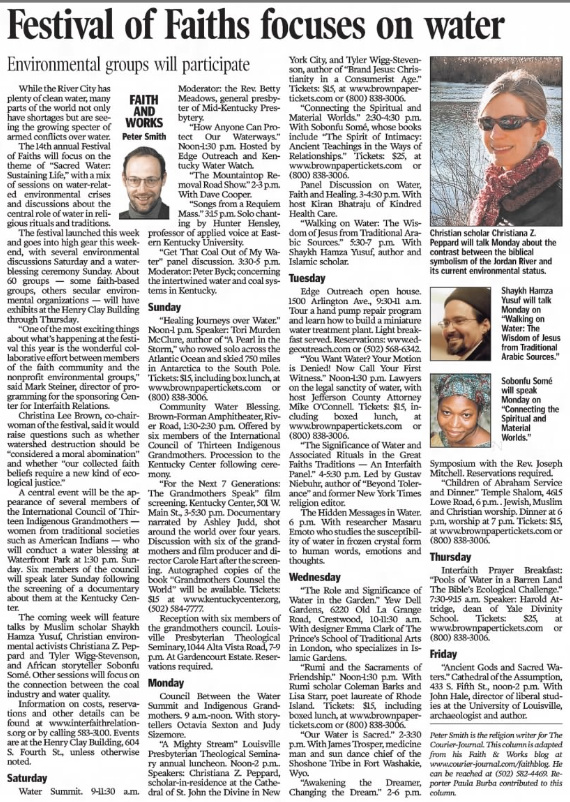
Smith, Peter. “Festival of Faiths Focuses on Water.” The Courier-Journal, 7 Nov. 2009, p. B3.
2008 | 13th Annual Festival of Faiths | Coming of Age
Our four-year series looking at the stages of life continued in 2008 with the theme Coming of Age. This 13th annual Festival of Faiths featured discussions that touched on the individual experiences of growing up, our evolving national identity and narrative, and the power of forgiveness.
Winona LaDuke, an Ojibwe community organizer, discussed how the founding and growth of our nation was at the expense of indigenous populations. Solange Maniraguha of Rwanda’s Quaker community visited Louisville to demonstrate how her country’s chapter of the Center for Interfaith Relations was working toward peace and reconciliation. We joined the Muhammad Ali Center for a high school workshop where we heard the perspective of people growing up in the digital 21st Century. And we visited the Home of the Innocents campus to wander the labyrinth and reflect on the journey of life.

Smith, Peter. “Louisville’s Interfaith Model Aids Rwanda.” The Courier-Journal, 4 Aug. 2008, p. A1.
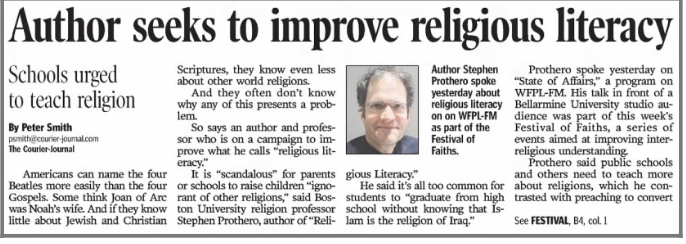
Smith, Peter. “Author Seeks to Improve Religious Literacy.” The Courier-Journal, 13 Nov. 2008, p. B1.
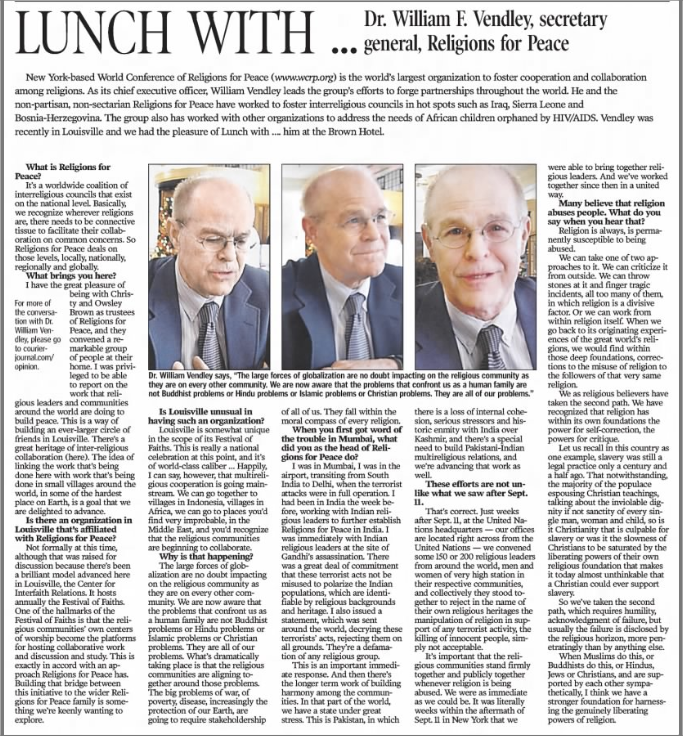
Opinion. “Lunch With… Dr. William F Vendley, Secretary General, Religions for Peace.” The Courier-Journal, 19 Dec. 2008, p. A12.

Arnow, Jan. “Join in the 2008 Festival of Faiths.” The Courier-Journal, 10 Nov. 2008, p. A6.
2007 | 12th Annual Festival of Faiths | Birth and Creation
In 2007, we continued our series based on the life cycle. Whereas the previous year’s Festival of Faiths focused on the end of life, this 12th annual installment went back to the beginning with Birth and Creation through the eyes of faith.
We explored birth as an event and sacred process, artistic expression as a birthing of ideas, and the continued rebirths we experience throughout our lives. Local filmmakers Robin Burke and Kay Millam shared with us the deeply spiritual encounters they had with birthing two films, and storyteller Mary Ellen Hill led our youth programming with creation stories from the oral traditions of various indigenous cultures. Workshops also included spirituality in birthing, how we come into the world and our connection to it; as well as how social artistry can bring new life and transformation to our communities.
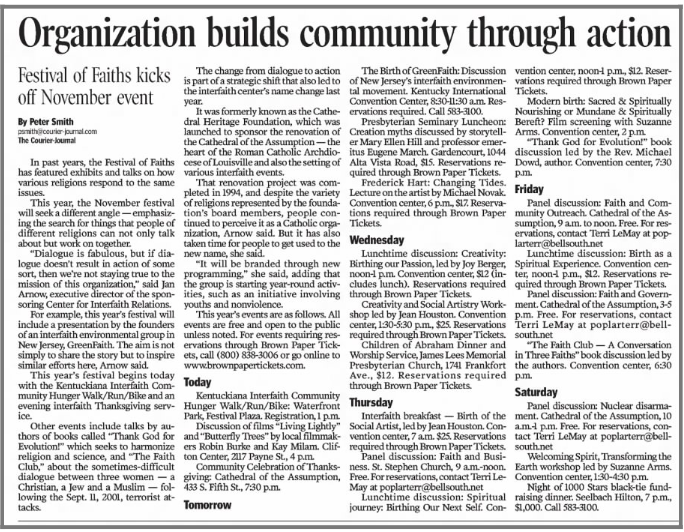
Smith, Peter. “Organization Build Community Through Action.” The Courier-Journal, 4 Nov. 2007, p. B6.
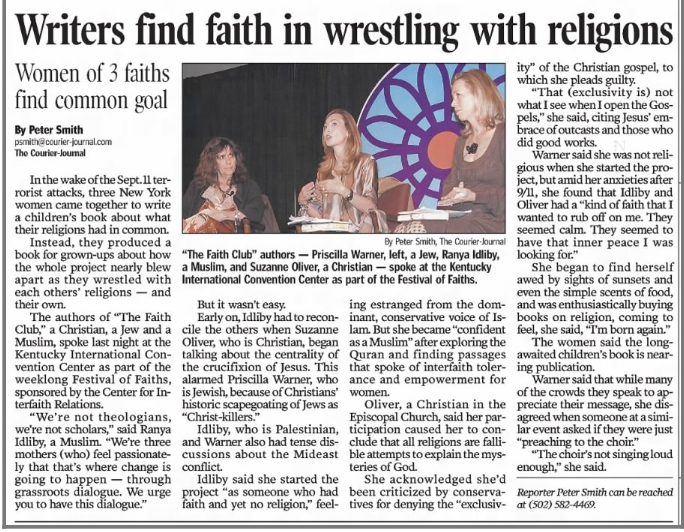
Smith, Peter. “Writers Find Faith in Wrestling with Religions.” The Courier-Journal, 10 Nov. 2007, p. B4.
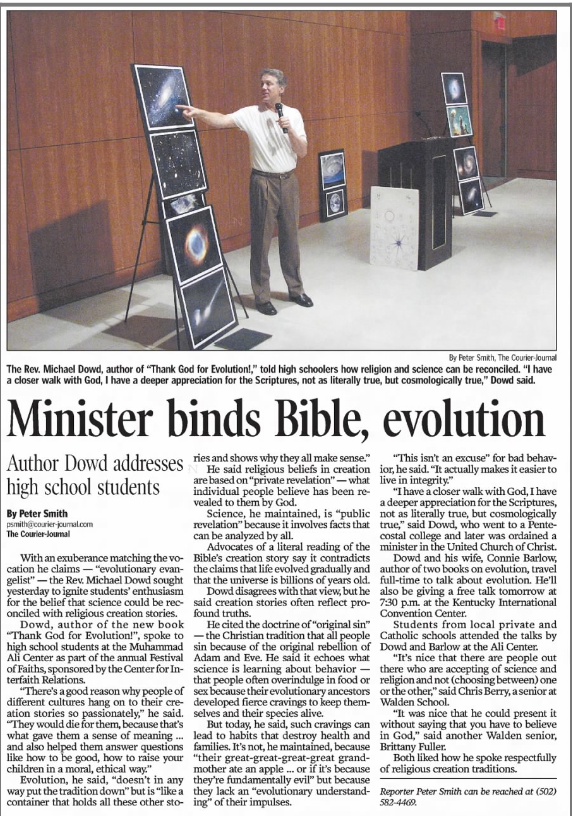
Smith, Peter. “Minister Binds Bible, Evolution.” The Courier-Journal, 7 Nov. 2007, p. B3.
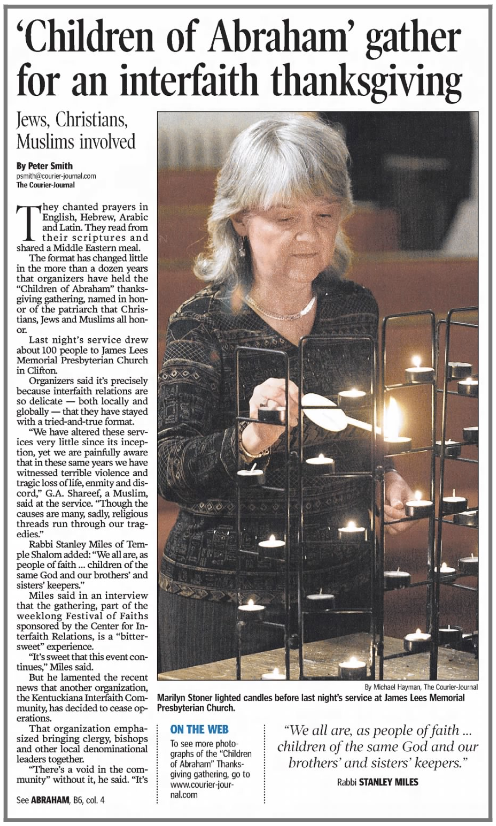
Smith, Peter. “’Children of Abraham’ Gather for an Interfaith Thanksgiving.” The Courier-Journal, 8 Nov. 2007, p. B1.
2006 | 11th Annual Festival of Faiths | Death and Dying
In 2006 our eleventh Festival of Faiths examined the final stages of life with “Death and Dying.” We investigated the approaches various traditions take to the end–of–life stages and how they shape our experiences during the rest of our years.
Poet Coleman Barks shared with us his translations of the poetry of Rumi, the 13th-century Persian poet; youth programming explored Mexican Day of the Dead activities; and Chief Jake Swamp represented the local Cherokee and Iroquois community in a tree planting ceremony. Our focus on the environment continued to play a prominent role, with a day-long ecological symposium on the many ways faith traditions can respond to the climate crises.
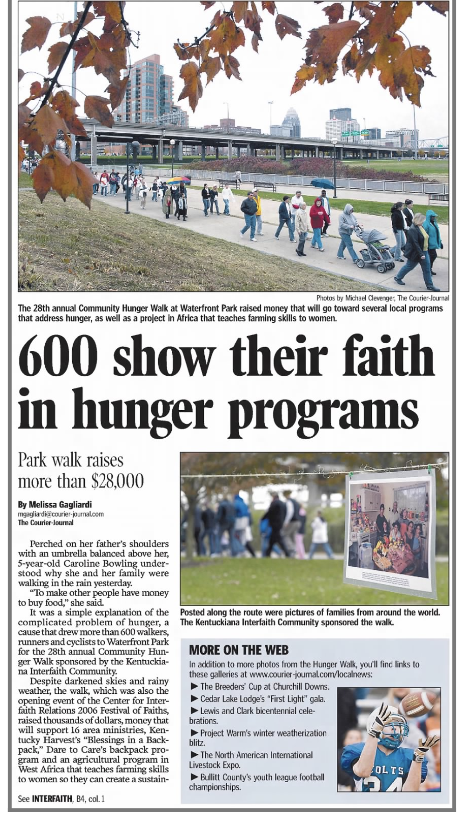
Gagliardi, Melissa. “600 Show Their Faith in Hunger Programs.” The Courier-Journal, 6 Nov. 2006, p. B1.
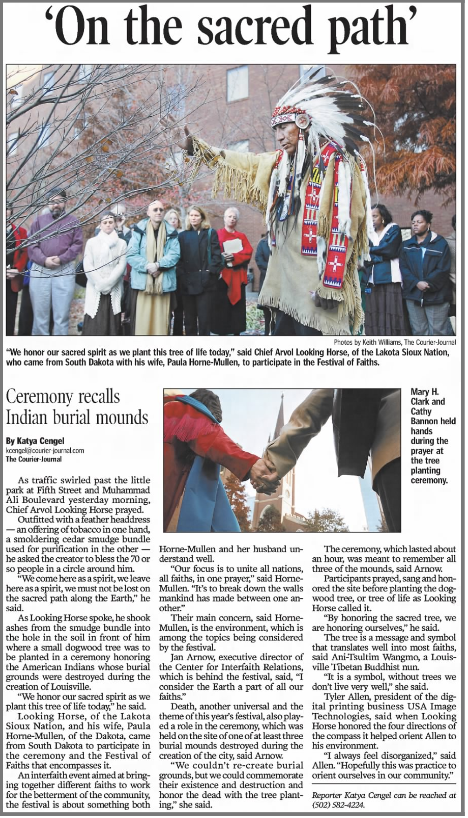
Cengal, Katya. “On the Sacred Path.” The Courier-Journal, 10 Nov. 2006, p. B1.
2005 | 10th Annual Festival of Faiths | Faces of Faith and Cooperation
Faces of Faith and Reconciliation was the theme of our 10th annual Festival of Faiths held in 2005. In partnership with the World Conference of Religions for Peace, we hosted a symposium entitled “One Earth, Many Faiths, Sharing Responsibility,” featuring guest speakers Wendell Berry, Kentucky author and environmental activist; Sister Paula Gonzalez, a biologist known as the “Solar Nun”; and Thomas Graham, former U.S. Ambassador to the United Kingdom.
As part of the Shewa Tour of Tibetan Peace and Healing, the Sera Jey Monks visited the festival and constructed a giant sand mandala. To close the festival, the mandala’s consecrated sand was then poured into the Ohio River. Former Mayor of Louisville introduced the community to our design concept for the George Garvin Brown Garden, located on Muhammad Ali Boulevard outside our office.

Smith, Peter. “Praying for Peace Amid Violence.” The Courier-Journal, 9 Nov. 2005, p. B1.
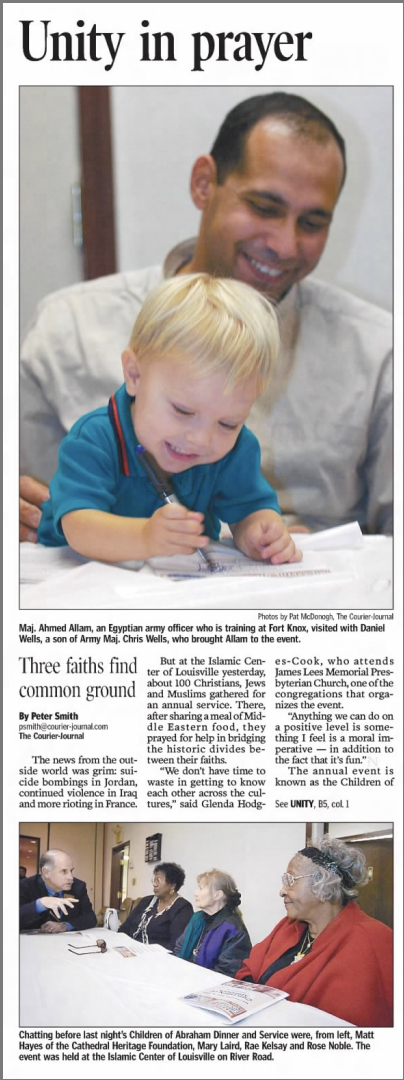
Smith, Peter. “Unity in Prayer.” The Courier-Journal, 10 Nov. 2005, p. B1.
